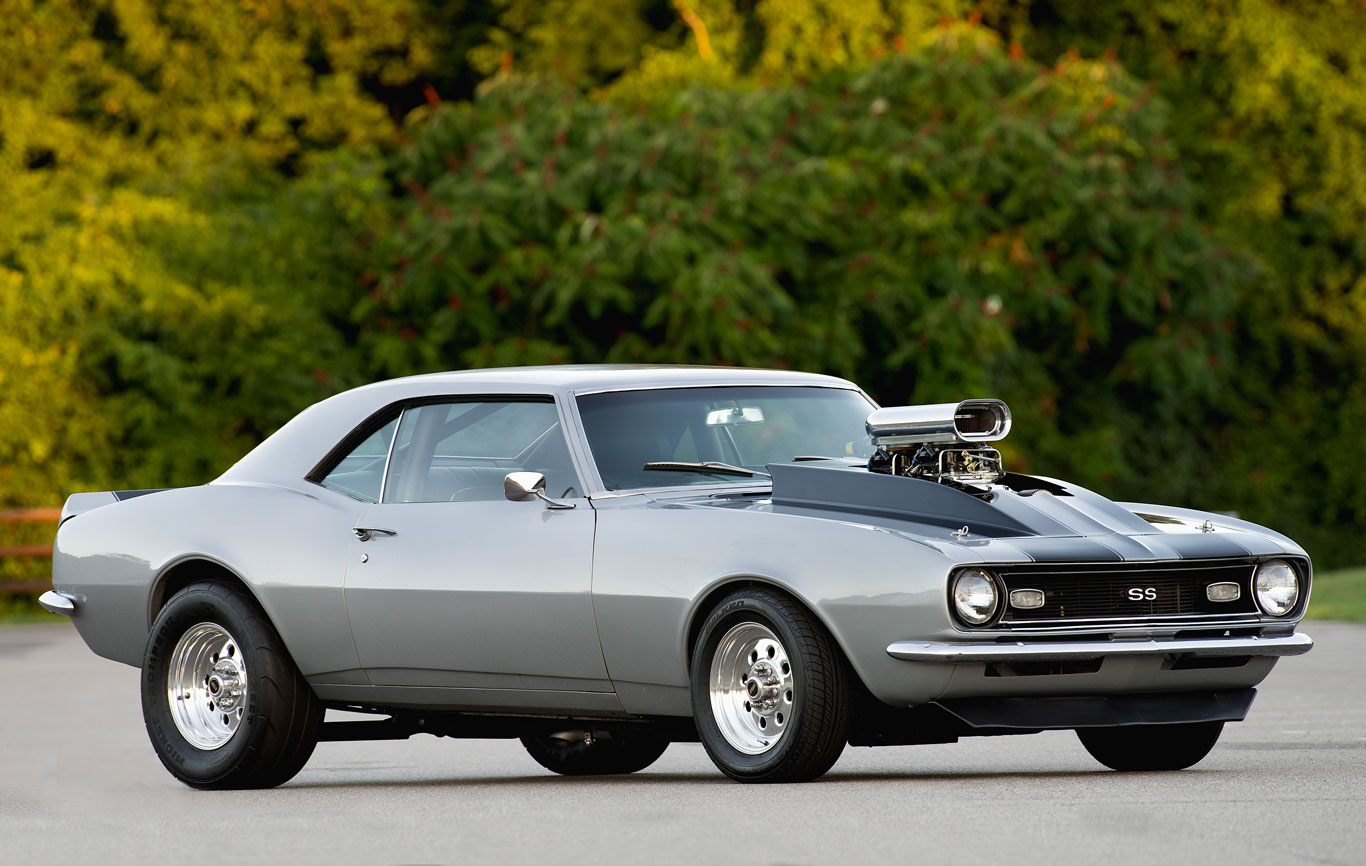For this Camaro, SS stands for supercharged and supersmart
On warm summer nights, George Pearce’s 1968 Chevrolet Camaro SS can often be seen on Detroit’s Woodward Avenue. It announces its arrival with a sonorous exhaust note that never seems to skip a beat. A GMC supercharger with a polished air scoop rising above the hood makes this silver beauty easy to spot.
I first met Pearce, 55, at a local cruising spot where he had stopped to join in the time-honored ritual of bench racing. I’m a fan of huge horsepower, and the Camaro’s blower – the classic dragster type, better matched to the car’s vintage than a compact modern design might be – caught my attention. A conversation followed, and his expertise proved impressive.
Pearce has been a dealership mechanic for more than 35 years and definitely knows his way around a car. As we talked about the Camaro’s 460-cubic inch big-block V-8, which he said delivers about 700 horsepower, the detail I found most interesting was the choice of fuel: E85, a blend of up to 85 percent ethanol and 15 percent gasoline (depending on geography and season).
The engine, which started life as a high-performance Chevrolet 454, is smartly outfitted to cope with both the E85 and the load of the supercharger by virtue of its forged-steel crankshaft, four-bolt main bearing caps, Lunati connecting rods, forged pistons, Patriot aluminum cylinder heads and a camshaft with enough lift and duration to give it a loping idle. The compression ratio is 9:1, but with the blower pumping in mixture, cylinder pressure is higher than that of a naturally aspirated 9:1 engine.
E85 is a smart fuel choice for an engine with high cylinder pressures. It has a higher octane rating than gasoline, so it can tolerate the blower boost, and it allows a higher compression ratio with more advance in the ignition timing. To those benefits, add low cost. As of late summer 2016, the price of a gallon of 93-octane E10 gas, which is 10 percent ethanol, was over $3 in Michigan. The average price of E85 was $1.69.
While a gallon of E85 contains less energy (as measured in BTUs) than a gallon of gasoline, the set-up it makes possible easily covers the shortfall, particularly in a supercharged engine where increasing cylinder pressure is a simple matter of changing drive ratios to spin the supercharger faster.
Until about two years ago, Pearce ran 93-octane gasoline. To avoid detonation, he had set up the supercharger’s belt drive to spin 11 percent slower than engine speed and hold boost below 7 pounds. On E85, he drives the supercharger 13 percent faster than engine rpm and generates 15 pounds of boost. There’s another benefit: On gasoline, the ignition had to be programmed to retard the spark at full boost. Now, it can run more spark advance to improve torque. Pearce said that if he were to rebuild the engine, he would raise the compression ratio to 11:1.
Pearce doesn’t guess when it comes to engine tuning. The Holley four-barrel carburetors have been prepped to deliver the right air-fuel ratio for a supercharged engine’s appetite, and he uses sensors in the exhaust and an air-fuel ratio gauge to keep tabs on conditions. He also monitors a manifold pressure gauge to confirm that the carburetors are adjusting the mixture appropriately as the blower starts producing boost.
That’s critical for a supercharged engine, where a lean mixture can cause a blower-wrecking backfire. If a blower is bolted on without being set up to deliver the fuel and air in the proper proportions, the resulting backfire can damage its bearings and rotors – and the blower will soon be screaming in defiance, drowning out the exhaust note.
When I met Pearce for a second time, I told him that I’d originally thought he was an engineer rather than a mechanic. His friend, listening in, said, “Trust me. Pearce is an engineer.”


